How To Make Your Reading Time More Productive With Book Summaries
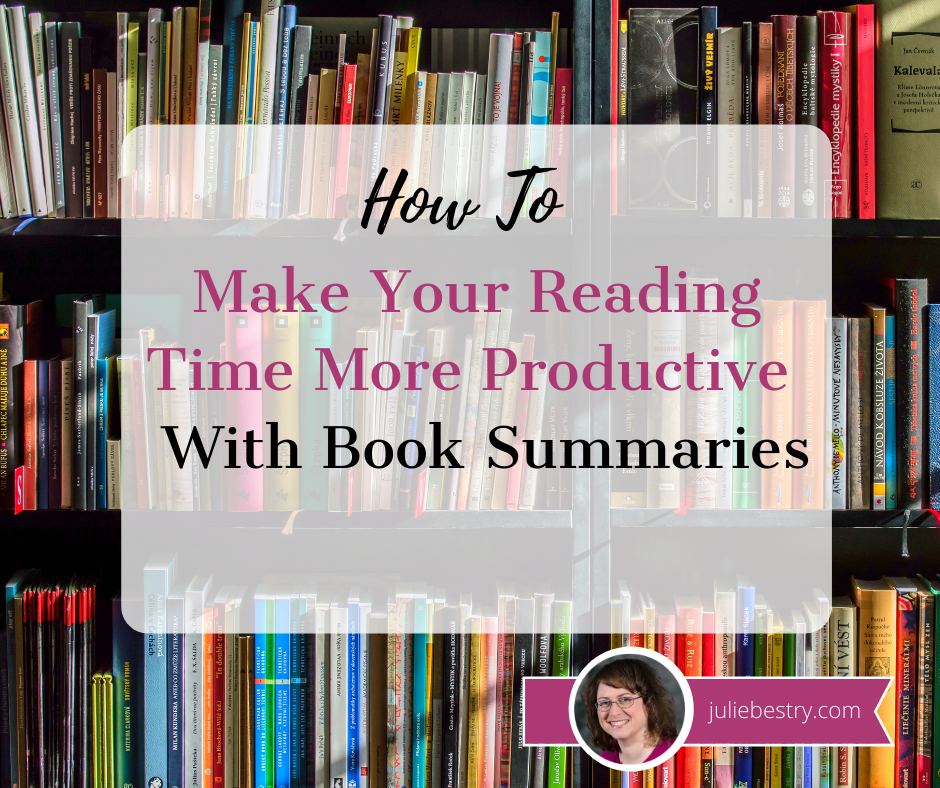
Over the last few weeks, we took a deep dive into squeezing more reading into your life. In 12 Ways to Organize Your Life to Read More – Part 1, we looked at creating space and time for reading, creating better habits, and making reading a communal experience. In 12 Ways to Organize Your Life to Read More – Part 2, we delved into developing reading lists, changing formats, tracking reading habits, and motivating yourself with challenges. We also touched on sampling books.
One problem my clients often report is difficulty reading the right books. There are so many titles on a topic they need, usually for work, that they never quite get to – or through – many of them.
Today, we’ll look at services offering summaries of important, recommended, and/or best-selling books that your colleagues (and bosses in the C-suite) may be discussing. You want these people to feel like you’re on the cutting edge. However, (especially during the pandemic, when you’re not only a worker-bee but perhaps also an in-house substitute teacher), it’s hard to make time to read all those buzzy-wordy tomes.
So, consider these options CliffsNotes for non-fiction books. These services give you the birds’ eye view of what they feel are the author’s most important points in any book. If the author’s style resonates with you, continue on to read the actual book. If not, you’re a jump ahead of the person who has only half-read a few reviews.
Book Summary Services

Read It For Me – What do you think of the idea of being presented with the “Best of a Book in 12 minutes?” That’s Read It For Me’s theory, that in under a dozen minutes, each audio or video summary can share the biggest ideas from the best books on sales, marketing, leadership, and personal development.
For over a decade, founder Steve Cunningham and his team at Read It For Me have worked with the leadership development programs at companies like Mailchimp, Zappos, Bank of Montreal, AstroZeneca, and Spotify to develop and tailor educational content, the basis for the Read It For Me summaries.
Each week, there’s one “featured” sample book summary video, available at no cost. Visit Read It For Me’s main page and scroll down until you see the friendly lady holding the popcorn and beverage, and click. The first few minutes introduce the platform, and then you can watch the video summary.
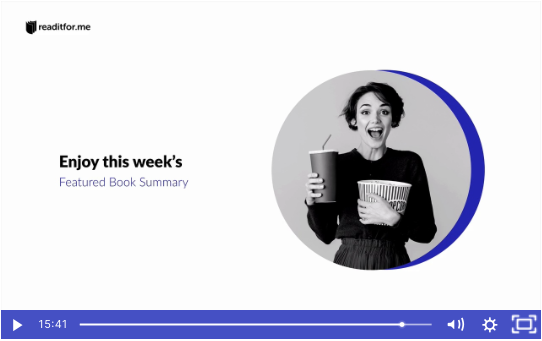
For each book summary in the Pro (paid) version, Read It For Me creates both an audio and a video summary (with an accompanying transcript). Just toggle “Listen” or “Watch,” depending on your preference, and with either version, you can read along with the transcript. (Note: the video does not have closed captioning; if you require it, you can open the summary page in a separate window and read while watching the video, side-by-side.)
Once you’ve completed a summary, you can mark it as read to help track your progress. Clicking a little heart icon works just as you’d expect to let you know that it was one of your faves.
Inside your book summary library, you can view all books, or sort by those that are most popular, the ones that you’ve already read, the ones you’ve marked as favorites, or by specific categories, which Read It For Me keeps fairly broad:
- Human Capital
- Innovation/Trends
- Entrepreneurship
- Personal Development
- Marketing
- Sales
- Leadership
Monthly pricing for Read It For Me Pro is $10, with no contract and a free first week. An annual contract is $110, payable in one lump sum. (Keep your eye on the site, as they often offer great discounts on lifetime memberships.) The app is available for iOS and Android, but the site is also well-formatted to access in your browser.
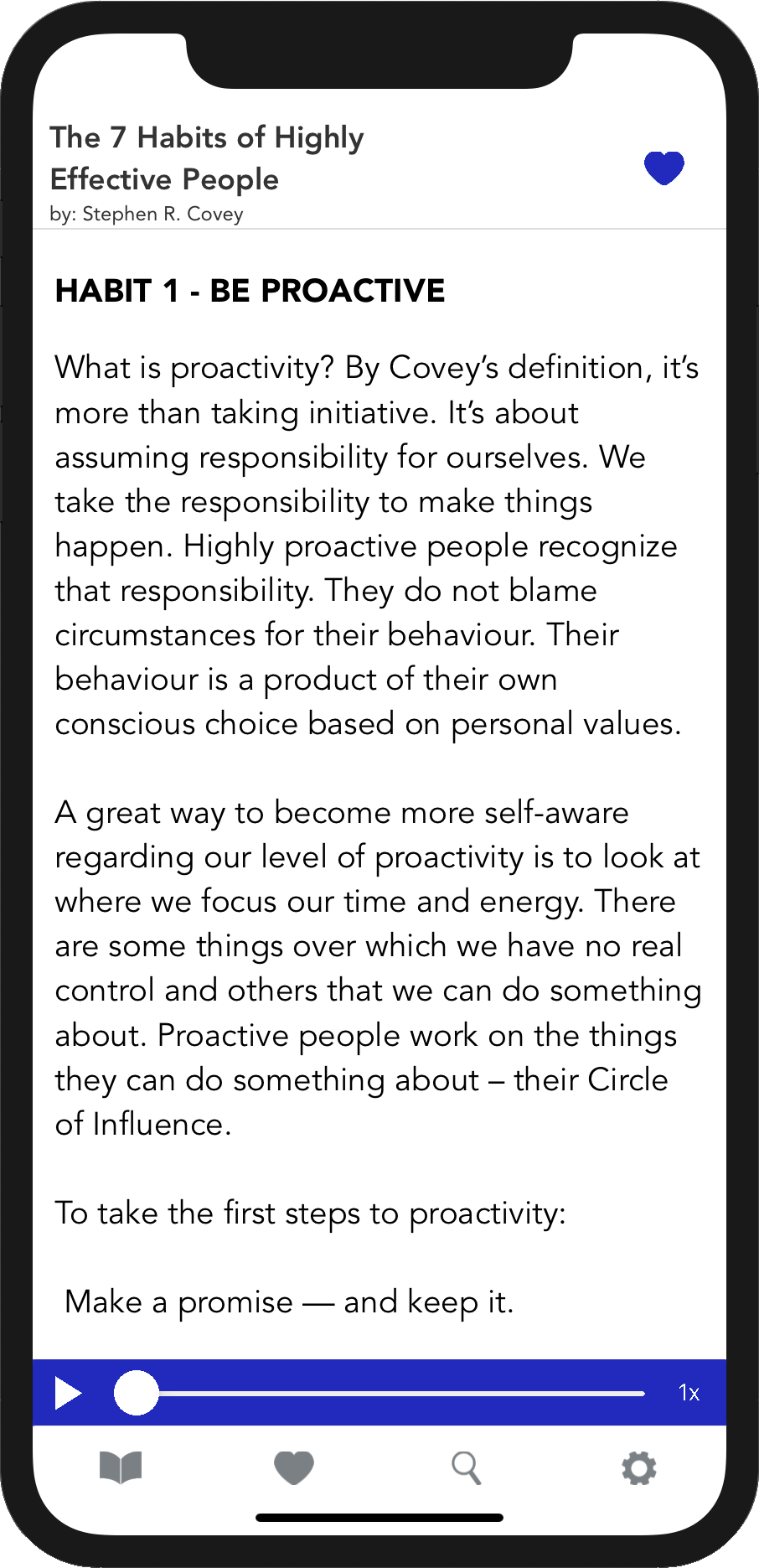
I’ve been a subscriber for about six months, and find the Read It For Me videos make a great (and educational) mental palate cleanser when transitioning between projects, especially in the late afternoon.
I use the summaries both to get a clearer picture of books that I’m not likely to read in full (generally on sales) as well as to get a sense of which books on similar topics would be the best fit for my reading and learning style (like Difficult Conversations: How To Discuss What Matters Most by Douglas Stone vs. Crucial Conversations: Tools for Talking When Stakes Are High by Kerry Patterson and Joseph Grenny vs. Fierce Conversations: Achieving Success at Work and Life, One Conversation at a Time by Susan Scott).
So far, my favorite summaries have been for Ryan Holiday’s The Daily Stoic and Brené Brown’s Daring Greatly.
A few final notes: all of the audios and videos are narrated by the founder, Steve Cunningham, so if you listen often, that can get a little repetitive. (But he’s got a conversational style of summarizing and a fun Canadian accent.)
Also, and of greater concern, the majority of titles are by white men, meaning that there’s a paucity of diversity of thought leaders, in terms of gender, race, and ethnicity. While this is attributable to which authors make it to the best-seller list, and this is common across all of the platforms discussed below, it’s worth noting at the outset.
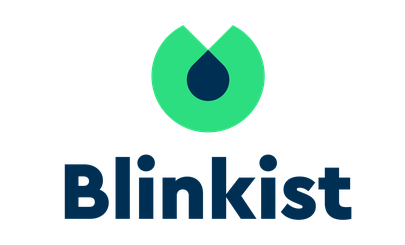
Blinkist – Based in Germany, the app’s editorial team pulls the key ideas and insights from 3500+ bestselling non-fiction books and transforms them into 15-minute (or shorter) read-or-listen offerings, called “blinks.” Created in 2012, it’s one of the oldest subscription-based book summarizing services and has more than seven million users.
Blinkist offers 27 different reading categories, ranging from productivity and personal development to entrepreneurship and corporate culture, to marketing and economics, and has created a wide variety of intriguing booklists. Not all of Blinkist’s categories are business-oriented, as philosophy, religion, science, politics, history, and more also get the summarizing treatment.
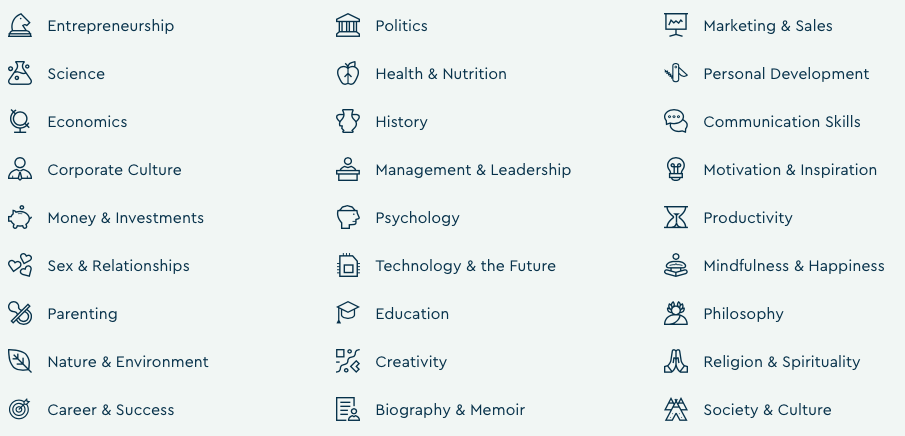
You can view recently-added titles (Laura Vanderkam’s The New Corner Office caught my eye) as well the community’s most popular titles. Every Blinkist summary is created in two versions, so you can read or listen. Personally, I process what I learn much better if I can read it, but some people might prefer to listen first, then read to get the full experience.
In addition to key takeaways and insights, the Blinkist app features curated book lists to help you select the best titles in specific categories. It also suggests new titles based on your reading history, presents new and trending titles, and makes it easy to discover your next preferred summary (or actual book to read). In addition to the app, Blinkist has a podcast, as well as a digital magazine with some compelling content like:
Becoming More Productive Isn’t a Goal, It’s a Habit
Why Are So Many People Struggling With Loneliness
Dare to Read: 8 Non-fiction Books Recommended by Brené Brown
Blinkist has a 7-day free trial, which gives you access to all of the summaries. After that, you can choose the Basic plan, at no cost. This grants you access to one Free Daily Read, but it’s selected by Blinkist, so you’re at the mercy of what they select for everyone. (On the plus side, you and a friend could discuss each daily title, augmenting what you get out of the experience separately.) The Basic “blinks” are read-only.
Alternatively, there are two pricing options for the Premium plan, either $15.99/month or $99.99 billed annually (for $8.34 month). The Premium plan includes the following features:
- Unlimited access to every title
- Audio summaries
- Offline library access
- Highlight the portions of the text summaries
- Forward your highlights to Evernote
- Send your text summaries to Kindle
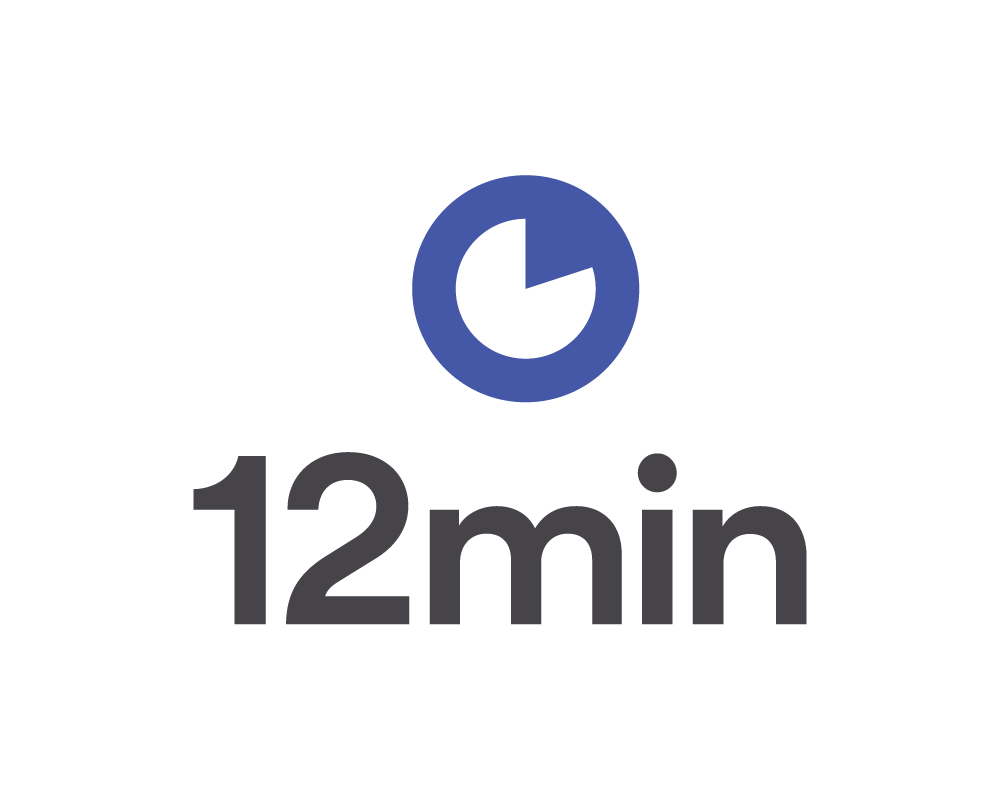
12 Min – Short for 12 Minutes (because who has time to read the whole word?), 12 Min is similar to Read It For Me and Blinkist. They offer a tiny bit more about their editorial process, noting that the team members “[r]ead the books several times, highlighting and writing down everything, searching for key ideas. Our team meets, discusses and summarizes the most important concepts and ideas” and creates what they call a “synthesized, optimized…microbook” available for consumption in under 12 minutes.
The platform covers thirty non-fiction categories, from standard business fare (like corporate culture and communications, management and leadership, and marketing and sales) to self-help (like health and diet, investment and finance, sex and relationships, and productivity and time management). 12 Min also offers summaries of children’s books, biographies, and memoirs. Search by category, author, or title. The website itself is available in English, Spanish, and Portuguese, and appears to be a Portuguese company.
Each 12Min “microbook” can be read as text or listened to as an audio in the app, and as with podcasts, you can adjust the speed, rewind ten seconds, or fast-forward thirty seconds.
Subscribers can create a new account with Facebook credentials or by creating an email/password combination, and 12 Min is available for iOS and Android. Compared to other platforms, the free trial period is pretty short at only three days, and, frustratingly, the website is not-at-all transparent regarding subscription costs. The iOS description indicates that subscription plans are available as Lifetime (full access to the library “forever,”), “Semestral” (for a six-month semester), and Yearly (for an annual membership).
The Android page indicates that in-app upgrades range from $12.99 to $144, but do not specify further. Eventually, by Googling “12Min pricing” I got to a pricing page to which one apparently can’t navigate from within the site, where it indicates a $69.30 annual price, and states that if you choose not to upgrade to from the free trial, you’ll be place on a “free plan” (also not referenced on the main site), able to read one free summary per day. I’d be eager to know if Spanish- and Portuguese-speaking readers can find more detailed information on the translated pages (linked at the bottom of the site).

Sipreads – This platform claims to offer “Takeaways from the best books, for free.” Categories of books summarized tend to focus on personal development, career success, startups, mindfulness, and happiness.
Launched in the past year by Ali Salah and Basile Samil, this email-based subscription service sends you a notification each week with the announcement of a new title’s summary. Each text-based summary will take about 5-10 minutes to read, and is printed in vision-saving large text with bulleted and numbered lists, bolded key points, and easy-to-read language. For example, here’s a summary of Nir Eyal’s best-selling Indistractible. The individual summaries are archived on the website.
The biggest advantage? Obviously, the $0 price tag. Sipreads has an affiliate relationship with Amazon, so if you find a book intriguing, click through, and buy the book, they get a tiny portion. While it doesn’t increase the book’s cost to the reader, it allows Sipreads to run the service for free.
The biggest disadvantage right now is a question mark. It appears that Salah and Samil write all of the summaries, and there’s no information regarding their professional experience in curation or librarianship, so the reader is left to trust that the summaries are accurate. Thus far, they seem to be. And again, spending no money and no more than 10 minutes reading the summaries means, at worst, you may not get everything you want, but you likely will get a sense of whether a book is for you.
These are only a few of the platforms and apps available for obtaining non-fiction book summaries. Others you might consider include:
- Sumizeit – ranging from a free 3-summary option to $5.99/monthly, 39.99/yearly and $69/lifetime plans
- getAbstract – $99/year for access to 5000 book summaries or $299/year for 20,000 titles
- Four Minute Books – free access to 800 book summaries
- Headway – Often compared to Blinkist for summary quality, it’s considered more user-friendly but has fewer titles; a monthly subscription is $14.99.
Pros and Cons of Book Summary Services
A summary is just that, a summary.
On the upside, you cut out the fluff and focus on the most salient points. If you need to have passing familiarity with the concepts of a buzz-wordy book in your profession, a summary can give you the key insights to keep from embarrassing yourself in conversation.
However, with summaries, you also lose the color, nuance, and richness that anecdotes in non-fiction books deliver. Are you the kind of person for whom insights come from declarative statements or from vivid stories? It’s important to know what kind of learner you are to get the most from a summary experience.
How to Make Book Summary Services Work For You
Don’t multitask. Seriously, it’s 10-15 minutes. Sit at your desk, snuggle on your couch, or otherwise make yourself comfy, but don’t try to dash off emails while you listen or work out while you read.
Take notes. You’re more likely to remember what you learn when you engage. There’s no need to make a transcript of the summary, but try creating a skeleton outline of the main points (or a mind-map, if that’s your thing), and write down any key words or phrases coined by the author, or which you otherwise find unfamiliar.
Develop a learning schedule. As we discussed in 12 Ways to Organize Your Life to Read More – Part 1, creating a specific time in your schedule for reading (after breakfast, before closing up work for the day, etc.) ensures that you will make time for expanding your knowledge. As none of these platforms take more than a quarter of an hour to embrace, you could explore five books each workweek (to get ahead on your backlog).
Read the actual books. If a book summary intrigues you, read the book. For full enjoyment, there’s really no substitute!




Wow- so thorough, Julie! I haven’t heard of most of these:) I love to read, but I think what really jumpstarted my adult reading was getting into a book group. That good old accountability really does work. Also, it got me reading books I would never choose for myself. I usually have the current “book group” book going, and then I also have an audiobook on Overdrive that I picked. It is a bummer when you think you are wasting precious time reading the wrong things, so I think these ideas are super!
Thanks, Seana. There’s a little more on book groups (and otherwise reading with others) in the prior parts of this series. With fiction, it feels like it’s easier to have an opinion because it can be so personal, making book groups fun. I find people are a little more reticent about sharing their thoughts about non-fiction, because we’re tempted to think there’s a “right” answer. With summaries, at least we can know whether the book is worth our attention. (And oh, so often, a summary lets us know that a book is NOT going to be for us. An unexpected win!) Happy reading!
I didn’t know such a thing existed, Julie. Thank you so much. This will help me greatly when I look for something to read. I’m an avid reader and flip between genres. So these sites are fabulous to know about. I will absolutely investigate them a little further.
Neato, Diane! Fiction is so personal that we need recommendations, but with non-fiction, I think what we need most are summaries, fact-based, “Here’s what this dude thinks” so we get enough of a taste to know whether a book will work for us. Let me know which one(s) you try!
What a fascinating list of resources, Julie! While I’ve know about Cliff Notes since my high school days, the other services I never heard of. The closest I get to ready book summaries is seeing an ad for a book or a book review that intrigues me. I add the title to my “Books to Read” list, which is always growing. It grows faster than I read books 🙂 I can see how reading summaries or the salient ideas would be beneficial. For me, I like to just dive right into the book. I’m always looking for connections to other things I’ve read or understand. Reading an entire book fasciliates those types of connections. But hey, never say never. There could be a reason to check out more summaries. And if I do, I’ll have you to thank for collecting these resources in one spot. Thank you.
Thanks, Linda. I’m a big believer in putting all the resources out there, and then people can pick and choose what works best for them. Personally, I like an ice cream taste of a book before I choose to read (or not read) a book, so I don’t waste my time (or money) on something that will miss the mark. For me, it’s kind of like reading the description (and not just the name) of a menu item…and now I’m hungry! 😉
Great reviews of all these book summary services. I was waiting to hear what you thought of Read It For Me. I subscribe to it and love the suggested summaries that they send my by email. If not for that I’d probably never know if many of the books.
I look at the summaries they suggest, but I do most of my reading at my desk, so I like that I can scroll through my browser looking at all the choices in the summary library. I’m so glad you’re enjoying it, too.
It’s like you wrote this for me, hahaha! I found myself saying “Wait really, I can do that?” in every section of this post. I also love the idea of an afternoon “mental palate cleanser.” Thanks for sharing!
Hey, Melanie, thank you, and I’m glad this was a good fit for you. Sometimes, learning priorities are all about finding a fit in the schedule. For example, I only listen to podcasts when I’m out walking. For summaries, that sluggish period around 3:30p when I feel like my desk and I have become one creature is the perfect time. 😉
These ideas are amazing and I can’t believe that I didn’t know about this sooner. This is perfect for someone like me. I love to read. However, when I read before I go to sleep, I fall asleep and never quite complete what I intended to finish.
Thanks for sharing this. You always come up with the most clever information!
Thanks for such sweet words. And I’m just the opposite — if I read in bed, I never get tired, and unless I finish the book, I’m still reading when the sun comes up!
I’ve never really paid much attention to this type of service, so thanks for doing all the research! I know that audio or video summaries aren’t for me, and that I wouldn’t use it enough to make it worth paying, so I like the looks of Four Minute Books, which has lots of text summaries available for free.
I get it. In the corporate world, there have been (high-cost) executive book summaries for years so big-wigs could know the salient points of important books without having to read them. I see these services as higher-tech, lower-cost versions for the rest of us. For people too busy to read, or too busy to read everything, this kind of service works great as a gatekeeper. I’ve determined many books would not be a good fit for me this way. (And I’m with you — audio summaries would definitely become aural wallpaper to me.)
I’ve heard of Read for Me and Blinkist but 12 Minutes is new to me. Adding it to my list to check out.
P.S. I like listening to books because when I read a book-book (is that a word?), I fall asleep! LOL
Too funny. A tangible book (a book-book) keeps me awake; an audio book either puts me to sleep, more more likely, let’s me daydream. Oy. Happy reading!